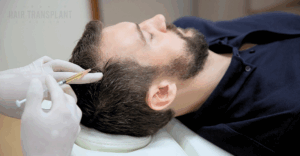As hair transplant procedures have improved over the last couple of decades, there has been an increase, especially in the last few years, in the use of robotics.
Particularly the ARTAS Hair Restoration System. ARTAS was cleared for use by the FDA in 2011 and like many new technologies relating to hair loss, it’s being touted by some as the next big advancement.
When looking at new technology, it’s always important to separate the truth from the hype. To truly understand what benefits ARTAS offers, it’s necessary to look at what job it does and whether the pros outweigh the cons.
How Does ARTAS Work?
ARTAS is a fully automated Follicular Unit Extraction (FUE) device that’s designed to speed up the hair transplant procedure whilst also providing extremely precise results. It works through the use of a computer-based program which is designed to completely automate the FUE process. The way it works is by mapping the donor area i.e. the area where the follicular units are going to be extracted from, then an algorithm is used to determine how the follicular units will be extracted.
A mechanical arm then extracts the follicular units, whilst compensating for natural patient movement. Whilst the ARTAS is able to be manned by surgeons, the process of FUE is fully handled by the machine itself.
What are the key advantages?
Given that the ARTAS system is fully automated, it does come with some key advantages. A less experienced surgeon can perform hair transplants more easily with this new technology.
Accuracy is another strength of ARTAS. Since it uses an camera and algorithm to determine which units to extract, it is able to allow less experienced surgeons determine the best means of extraction without taking too much hair from the donor area.
Another advantage of the system is less strain on the surgical team. Hair transplants are an exacting and repetitive business. Relying on a robot certainly can remove some wear and tear on the surgical team.
What are some of the disadvantages?
There are some key disadvantages that come with using ARTAS. Firstly, at present the machine is only available with 1mm extraction needle, which is considerably larger than the .7mm needle used by many top hair transplant surgeons. Another key disadvantage is the cost of the machine. Costing approximately $250,000 with a price per punch attached as well, it’s certainly a considerable investment and could easily lead to the costs being passed over to patients.
Another thing to bear in mind is that because the ARTAS device is fully automated, there is little room for human involvement in the process. It would be easy for under-trained surgeons to become overly reliant on the machine for carrying out this part of a hair transplant procedure.
Conclusion
There will doubtless be other robotics introduced to the market to try and automate and speed up hair transplants but it’s unforeseeable that they’ll be able to offer the same level of precision and care that a skilled surgeon can provide. Every patient has different needs for a hair transplant so a consultation is a vital part of the process as well as the procedure itself.
You can find out more information on hair transplants by visiting Dr Jones’ website – https://torontohairtransplant.com/





